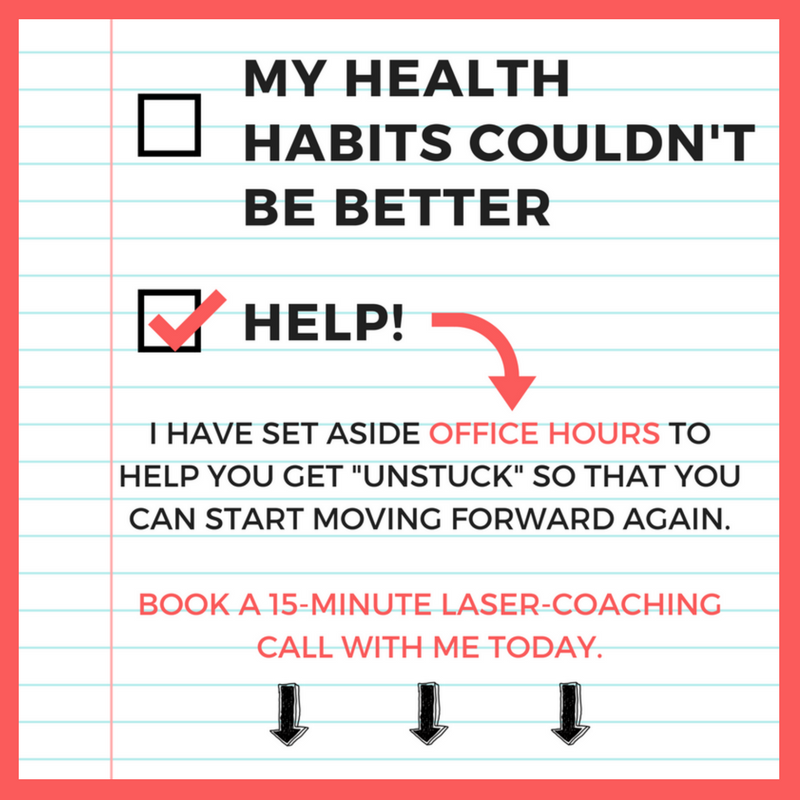Lower Stress Using This Simple Tweak
We know that chronic stress can not only wreak havoc on our immune system causing us to catch colds more often, but that’s the least of one’s problems when stress levels are at a high constant.
Feeling stressed occasionally is normal and natural, but when your body is in high gear for sustained amounts of time or even unrelenting low-grade stress over time, it can easily lead to heart attacks, strokes, and Alzheimer’s.
On our recent Group Discussion in our community, I shared a strategy that I use to help keep stress at bay.
It’s something the ladies found interesting, so I thought I’d share it with you.
I hope this simple tweak to your environment, whether at home, work (or better yet, both) helps you keep your stress levels in check and steer clear of those life-threatening illnesses and diseases.
Earlier this year, I watched the Ken Burns documentary on the Vietnam War.
I tried to imagine what it would feel like to be a solider walking through the jungle just waiting for shots to fire at you from any direction – what might it be like to be in that constantly stressful environment, when at any moment you are faced with life or death situations.
Closer to home, take a moment to imagine what it might be like to be on the floor of the New York Stock Exchange before the closing bell sounds.
Standing in the middle of the noise and chaos, I can envision the high level of stress and anxiety I would feel in that environment.
Well, we don’t have to be a solider on the front lines or work on Wall Street to experience high levels of stress that we create in our minds and in our bodies.
What’s more, whether you’re aware of it or not, certain environments in your own day-to-day life can bring about the levels of stress that can impact your health over time.
There are some daily stressful environments that are hard to control, like your daily commute, for example.
But what I’m suggesting is to consider what environments are in your control and how you might be able to tweak them in order to control stress in your life.
In other words, how can you tweak your environment so that you are in charge of when you feel stressed, not the other way around?
Here’s an example based on my own experience.
Since I work from home, I spend a lot of time at home.
“Home” is where I eat, sleep, and work. It’s where I “live” a lot of my life.
So when someone says they try not to “bring their work home,” they usually mean that once they leave work, they physically and mentally “leave their work at work.”
But since I work from home, in order for me to “leave my work at work,” I have to create an environment that intentionally separates “work” from “home.”
I do this by designating “areas” I do things (and don’t do them) at home.
For example, my office is specifically for work – I don’t do anything else at my desk besides coach my clients, write, and work on projects (although sometimes I take writing and projects to a coffee shop).
Then I have an area at home that has a comfy chair, rug, and table lamp, which I use as a place just for reading.
Bed is for sleeping; living room is for entertainment, and so on… You get the picture.
So for me, “not bringing work home” means that when work is done for the day, I close my laptop, organize my desk, push my chair in, close the doors, and walk out.
When you have designated areas in your home (or office) that are only for certain things, it helps manage stress (if you work outside of home, perhaps your desk can just be for work, but there’s another place you eat, and another place you take a break).
I’ve found that once I start combining different areas, I notice that my stress increases.
For example, if I bring work to bed with me, then my bedroom begins to have a different feel. It’s no longer a place of only peace, calm, and rest.
The same is true if I bring work to my reading area, because the next time I sit in my reading chair, I might get distracted thinking about my work “to-do list” and that might stress me out.
Don’t get me wrong, it’s not like I’m able to completely shut my mind off to distractions when I’m in specific areas, but I’m much more able to be aware that my mind is going somewhere else.
This awareness helps me pull myself back to the present – depending on where I am, “In this present moment, I work… I sleep… I read… I relax… etc.”
Finally, consider how something as simple as not eating at your desk can help you keep your weight in check.
Once you start combining work (if it’s stressful) with eating, you might as well call it “stress-eating.”
The aim to ward off stress is then to:
- Control your environment the best you can (this area is just for this),
- Uni-task (as opposed to multi-task), and
- Practice being present (eating mindfully, for example).
The task is then to take inventory of the areas of your life (home, office, etc.) that bring about stress and then consider how you can tweak each area to meet the three criteria above.
I hope you find this strategy helpful, but more importantly, I hope you do it.
Over time, it could be a matter of you avoiding a life-threatening disease.
I think it’s worth it. Don’t you?
It’s your turn to take care of you,

Need Some Help?
 Book a time to talk with me HERE.
Book a time to talk with me HERE.




Still getting this worked out, but I think it will really help me when I do.